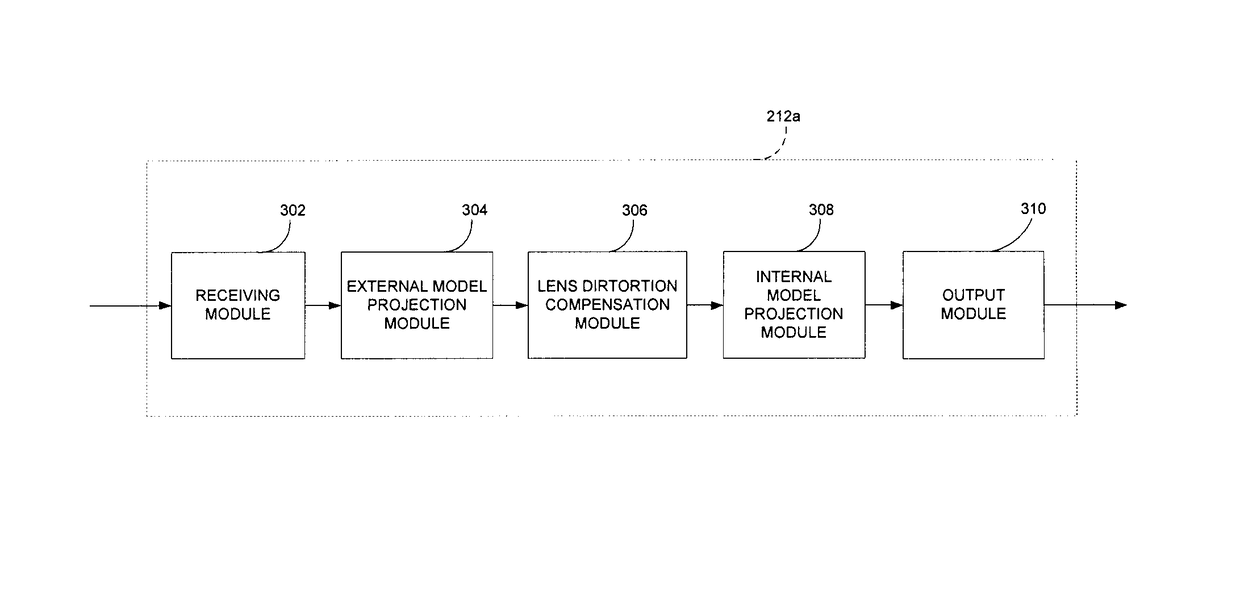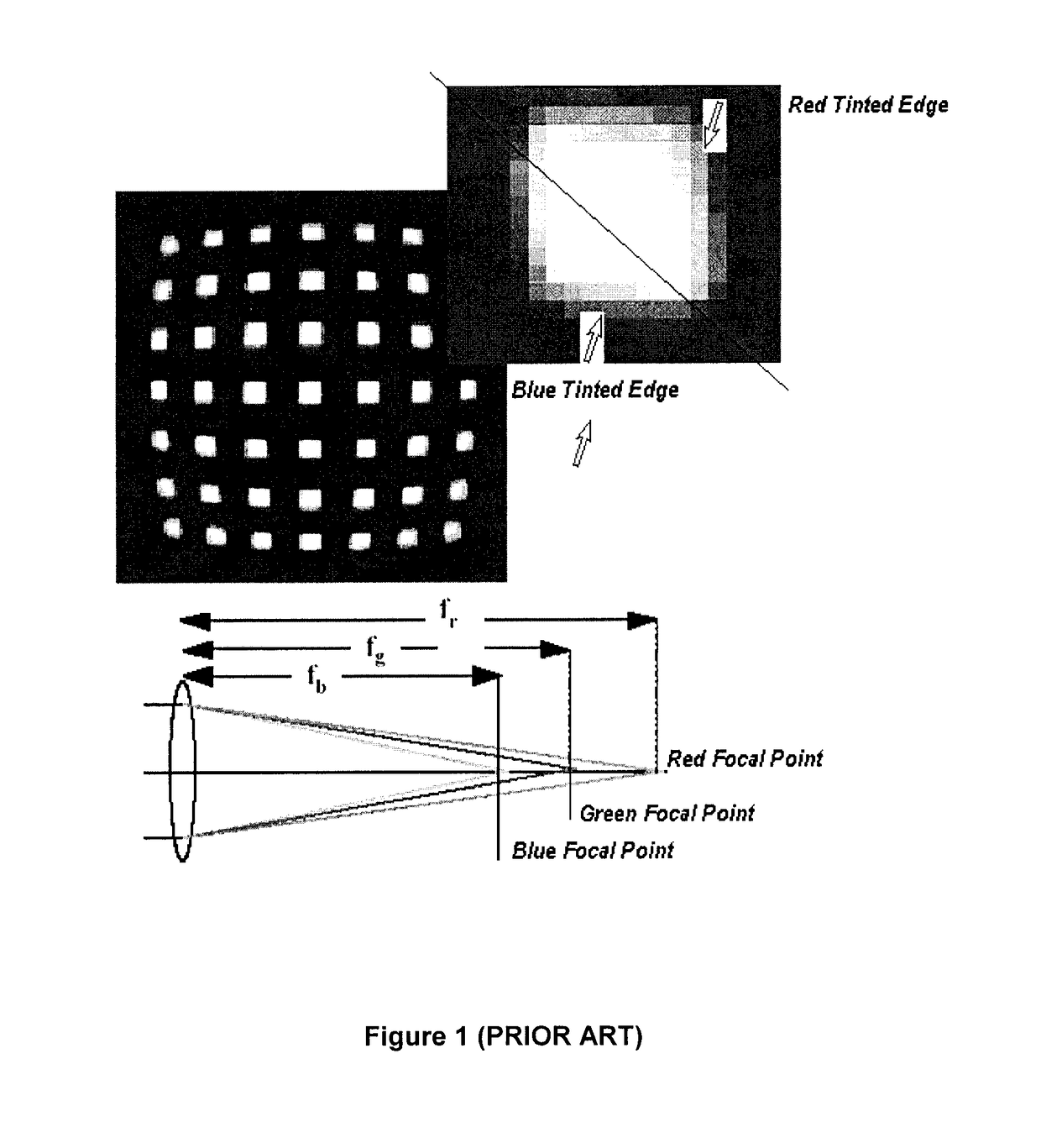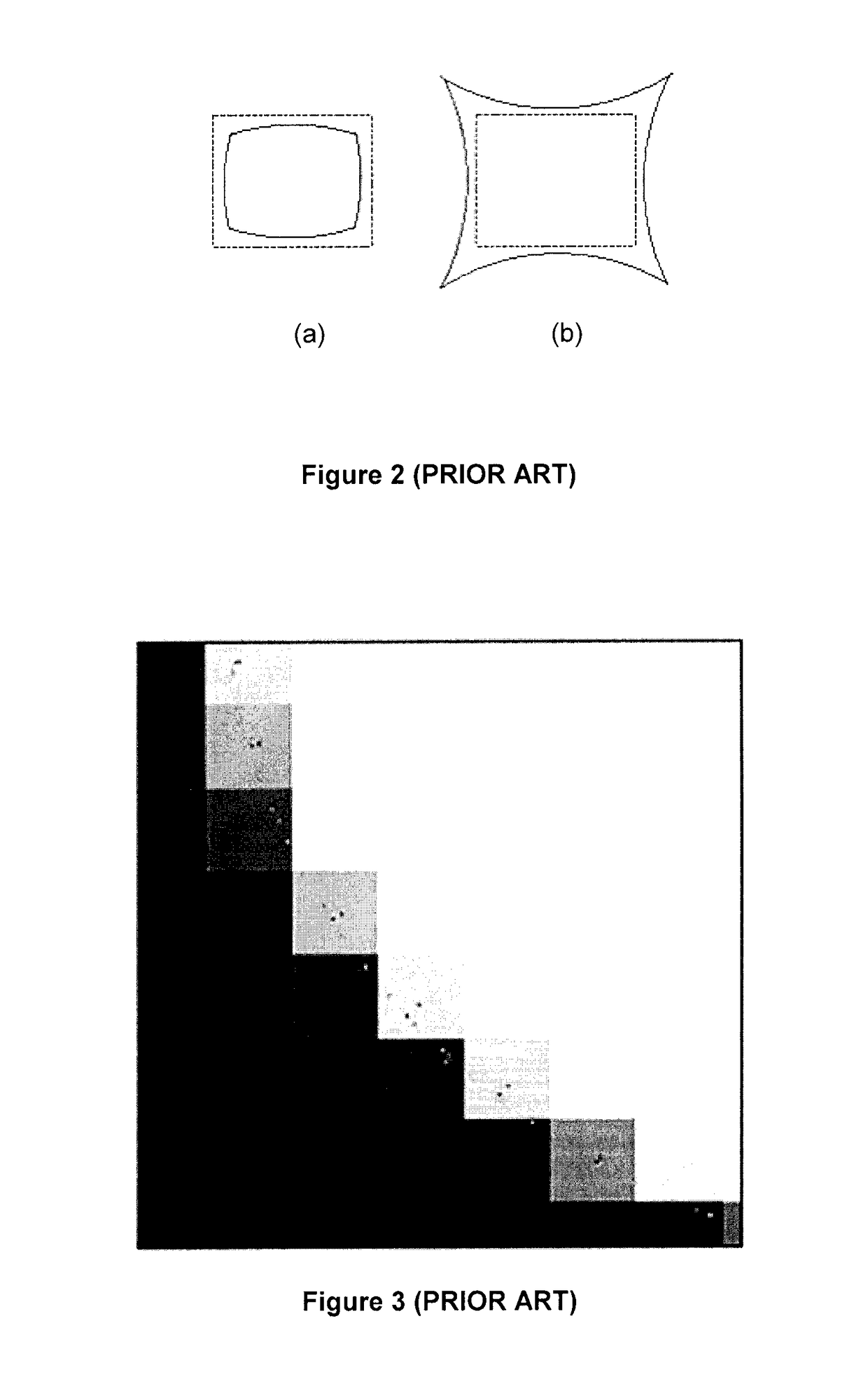System and method for imaging device modelling and calibration
a technology of imaging device and system, applied in the field of system and method for imaging device modeling and calibration, can solve problems such as systematic measurement errors
- Summary
- Abstract
- Description
- Claims
- Application Information
AI Technical Summary
Benefits of technology
Problems solved by technology
Method used
Image
Examples
Embodiment Construction
1.1 Lens Distortion
[0058]Lens distortion introduces the biggest error found in digital imaging. This is illustrated in FIGS. 1 and 2. As can be seen in FIG. 1, the fish eye effect is referred to as geometric distortion and curves straight lines. Coloured shading at the edges of the image (referred to as > and > in FIG. 1) is referred to as chromatic distortion and is caused by the splitting of light in the lens of the imaging device (not shown). These deviations from pinhole behaviour increase with the lens angle of view. Both distortions have to be modeled and compensated for to achieve sub-pixel accuracy, compensation possible only through software to go beyond hardware capabilities. As can be seen in FIG. 2, when geometric distortion compresses the image on itself, it is referred to as barrel distortion (see FIG. 2 (a)); when the image expands, it is referred to as pincushion distortion (see FIG. 2 (b)).
1.2 Dithering
[0059]With reference to FIG. 3, dithering is the intermediate pi...
PUM
 Login to View More
Login to View More Abstract
Description
Claims
Application Information
 Login to View More
Login to View More - R&D
- Intellectual Property
- Life Sciences
- Materials
- Tech Scout
- Unparalleled Data Quality
- Higher Quality Content
- 60% Fewer Hallucinations
Browse by: Latest US Patents, China's latest patents, Technical Efficacy Thesaurus, Application Domain, Technology Topic, Popular Technical Reports.
© 2025 PatSnap. All rights reserved.Legal|Privacy policy|Modern Slavery Act Transparency Statement|Sitemap|About US| Contact US: help@patsnap.com



